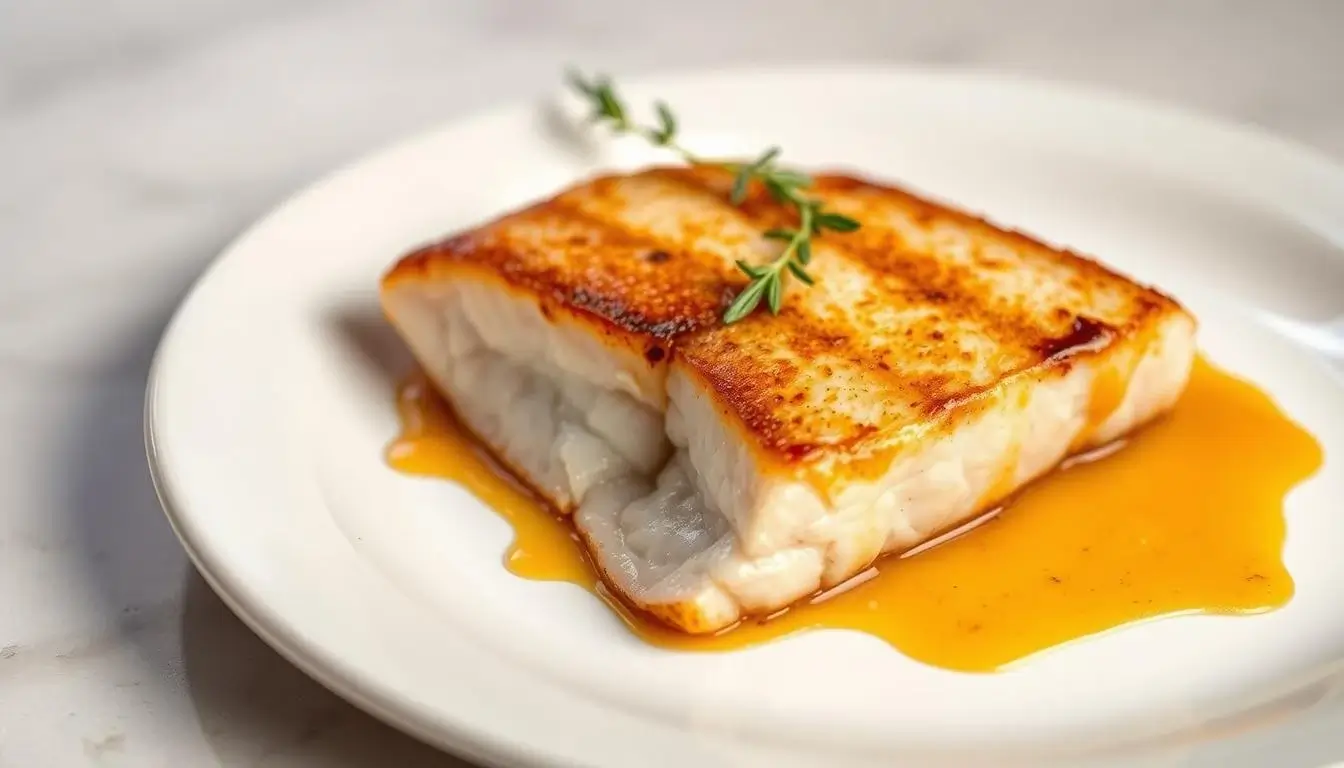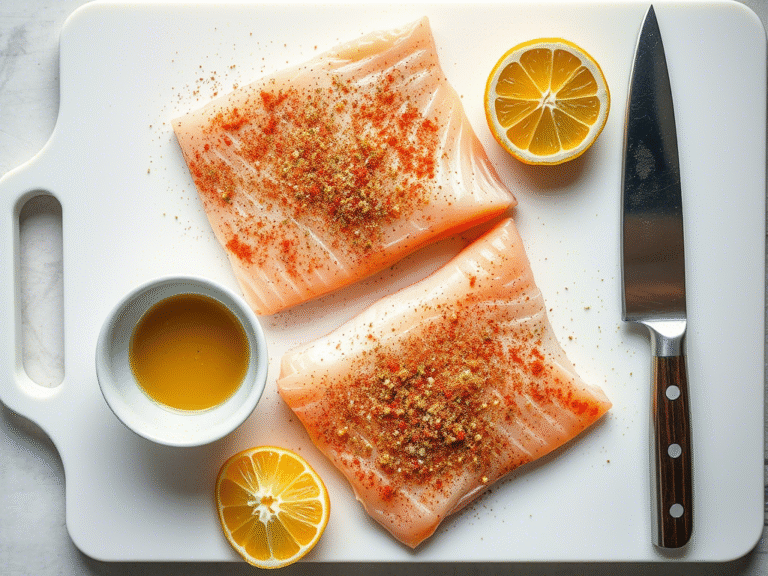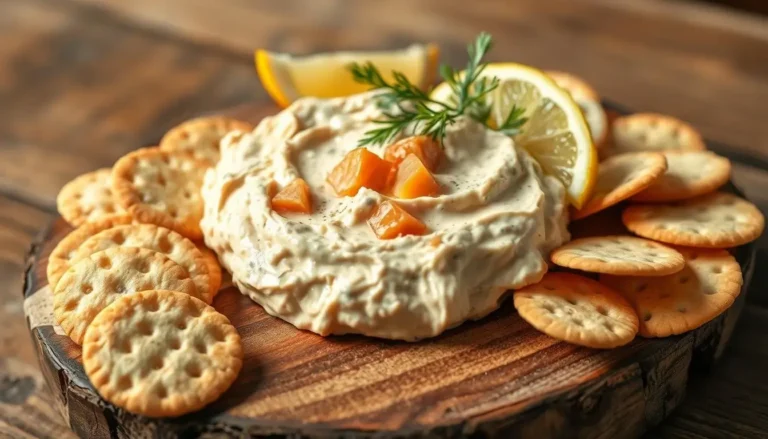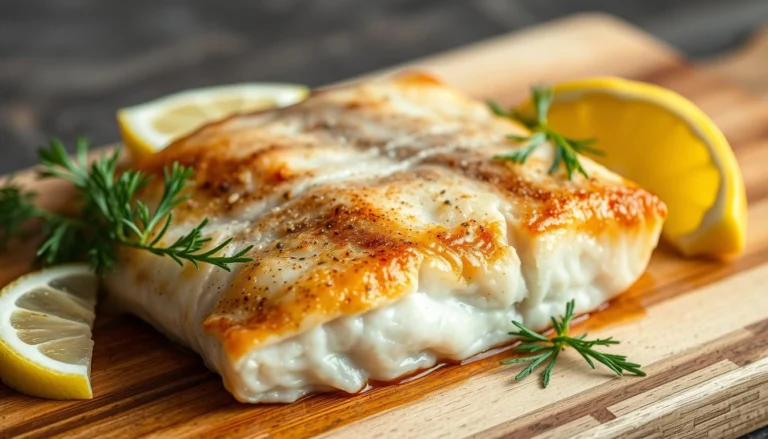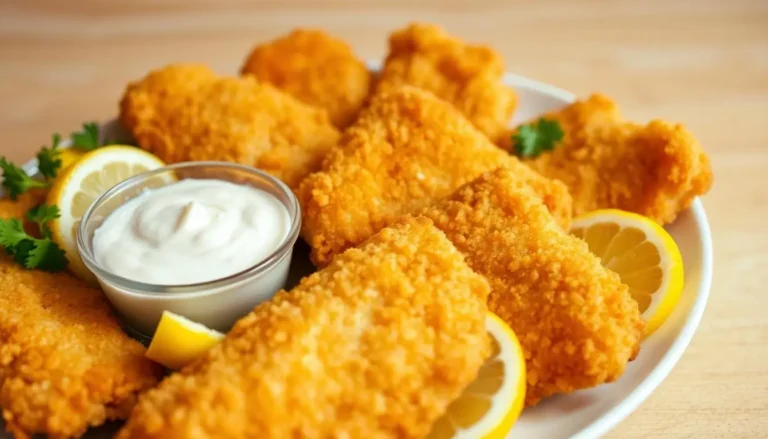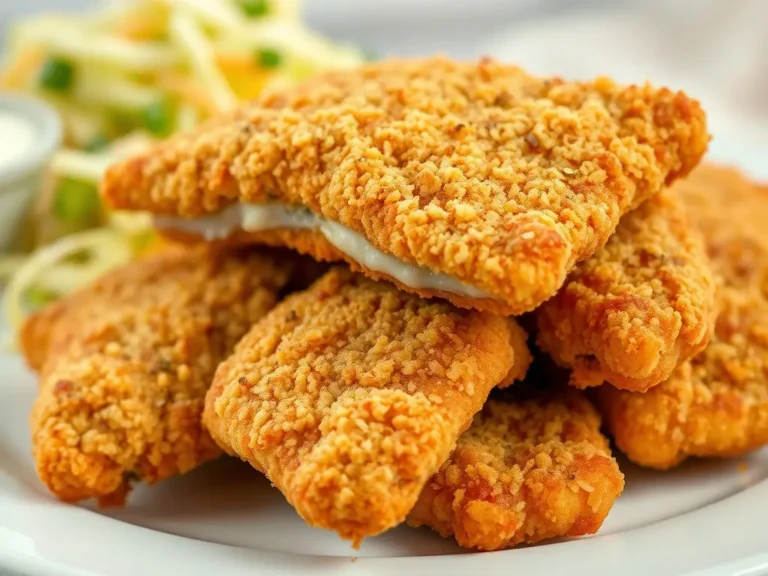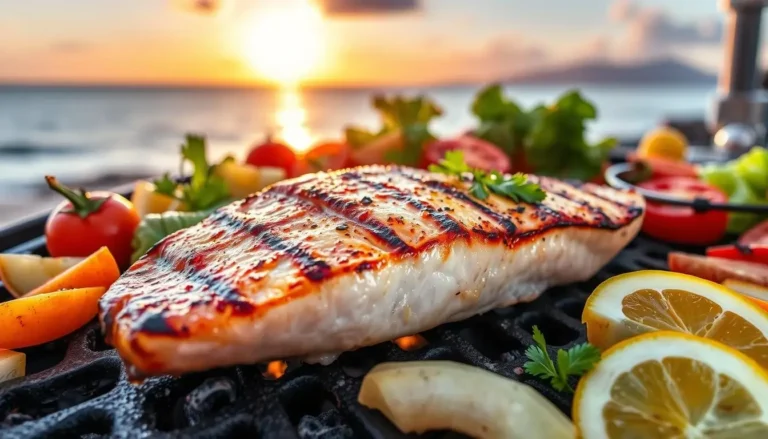Top Wahoo Recipes for Perfectly Cooked Fish
Table of Contents
Top Wahoo Recipes
Imagine your friend Jamie hosting a backyard dinner last summer. They proudly served a beautifully seared fish fillet, only to watch guests push it around their plates. The problem? Overcooked, flavorless wahoo. Sound familiar? This lean, firm-textured fish demands precision – but when done right, it’s a flavor powerhouse worth mastering.
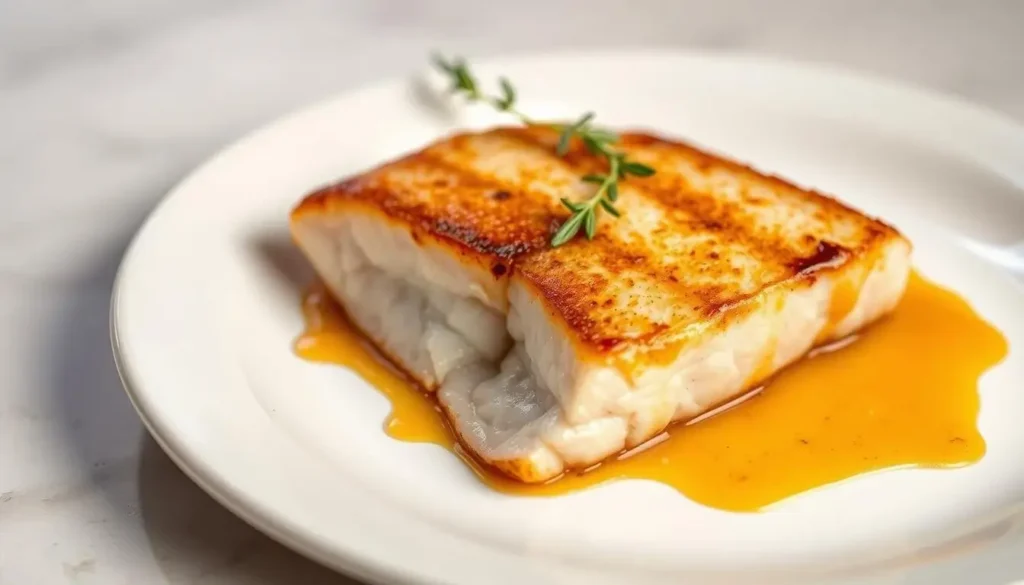
Today’s guide solves that kitchen puzzle. You’ll discover methods like quick-grilling for smoky char or blackening spices for bold crusts. Each approach balances simplicity with restaurant-quality results. We’ve sourced tips from coastal chefs and nutritionists to highlight both taste and health perks.
Why focus on this saltwater favorite? Beyond its mild sweetness, it packs more omega-3s per ounce than salmon. Pair that with 27 grams of protein per serving, and you’ve got a meal that fuels as it delights. Whether you’re searing, baking, or poaching, our timing charts prevent rubbery textures.
Key Takeaways
- Master grilling, blackening, and baking techniques for tender results
- Optimize cook times (typically 4-6 minutes per side) to prevent dryness
- Enhance natural flavors with citrus marinades or spice rubs
- Benefit from high omega-3 fatty acids and lean protein content
- Access plating ideas that transform simple fillets into showstoppers
Ingredients and Kitchen Essentials for Wahoo Dishes
Ever wonder why some fish dishes sing with flavor while others fall flat? The secret lies in pairing quality ingredients with purpose-built tools. Let’s break down what you need to transform simple components into memorable meals.
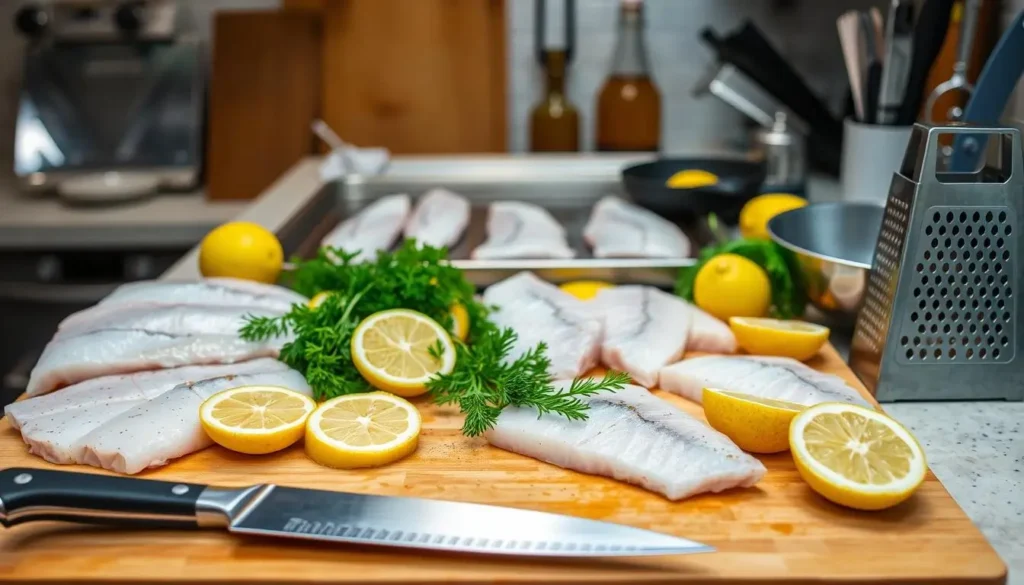
Key Ingredients Overview
Quality matters when selecting your core elements. Use extra virgin olive oil for its rich aroma and high smoke point – ideal for searing. Fresh garlic (6 cloves per 2 servings) delivers sharper flavor than pre-minced versions. Precise measurements like 1/2 cup butter ensure balanced richness without overwhelming the fish’s natural taste.
Acidic components need attention too. Two tablespoons of lemon juice add bright acidity that cuts through the fish’s oil content. Fresh herbs like thyme or parsley should feel crisp – avoid wilted bunches. If substitutions are needed, try lime juice or dried oregano, adjusting quantities by half.
Essential Tools and Equipment
Your toolkit determines texture. A cast-iron skillet creates perfect crusts, while a blender emulsifies butter sauces smoothly. Use these essentials:
- Heavy-duty grill pan for even heat distribution
- Stainless steel mixing bowl for marinades
- Digital thermometer to check doneness (125°F internal temp)
Non-reactive containers prevent metallic tastes when using citrus. Thin spatulas help flip delicate fillets intact. Remember: proper tools reduce cook time guesswork and elevate your final presentation.
Understanding Wahoo: Flavor, Texture, and Health Benefits
What sets this ocean catch apart? Wahoo’s mild sweetness lands between mahi-mahi and swordfish, with a firm, steak-like texture that holds up to grilling or pan-searing. Unlike oilier fish, it won’t overpower delicate sauces or spices.
Flavor Profile and Nutritional Benefits
Think of wahoo as the chameleon of seafood. Its subtle taste adapts to bold blackening rubs or lemon-herb marinades. A pinch of salt and light butter baste enhances its natural notes without adding heaviness. For comparison:
- Milder than tuna, with less “fishy” aftertaste
- Firmer than salmon, ideal for high-heat methods
- Lower in calories than swordfish (110 per 4 oz)
Nutritionally, it’s a powerhouse. Each serving delivers 27g protein and 1,200mg omega-3s – nearly double some salmon cuts. The lean meat stays moist when cooked quickly, making it perfect for weeknight dinners. Health-conscious cooks love its versatility: bake it with herbs, grill with citrus, or sear with chili flakes.
Chefs recommend keeping seasonings simple. A dash of sea salt before cooking and a butter drizzle afterward let the fish shine. This approach preserves its delicate texture while boosting flavor naturally.
Cooking Techniques to Master the Perfect Fish Dish
Great technique separates forgettable meals from fork-tender triumphs. Whether you crave grill marks or crave spice-packed crusts, these methods unlock restaurant-quality results at home.
Grilling and Searing Methods
Preheat your grill or skillet to medium-high heat (400°F) for 10 minutes. Pat fillets dry and lightly oil them. Place flesh-side down first, pressing gently for 30 seconds to create a golden crust. Cook 3-4 minutes per side, flipping once with a thin spatula.
Use a grill pan with ridges to prevent sticking. Resist moving the fish – let the heat work its magic. For skin-on cuts, start skin-side down to render fat evenly.
Blackening and Spice Blends
Mix 2 tbsp paprika, 1 tsp cayenne, and 1/2 tsp thyme for a bold rub. Heat a cast-iron skillet until smoking hot. Dip oiled fillets in spices, then sear 2 minutes per side. The high heat caramelizes spices into a flavorful crust while keeping interiors moist.
| Method | Heat Level | Cook Time | Best For |
|---|---|---|---|
| Grilling | Medium-High | 4-6 mins/side | Outdoor flavor |
| Searing | High | 3-4 mins/side | Crispy exterior |
| Blackening | Very High | 2-3 mins/side | Bold spices |
Timing adjustments matter – thicker cuts need 1 extra minute per inch. Let fish rest 2 minutes before serving to redistribute juices. Experiment with spice ratios, but always prioritize a hot cooking surface for that perfect sear.
Delicious wahoo recipes to Try Tonight
Transform your kitchen into a coastal bistro with two showstopping dishes. These preparations balance rich and bright flavors for meals that feel special yet require minimal effort.
Garlic Butter Herb Sauce Mastery
Melt 4 tbsp butter in a pan with 3 minced garlic cloves. Stir in 1 tbsp lemon juice and 2 tsp chopped parsley. Brush generously on 1-inch-thick fillets before cooking.
Heat a skillet over medium-high. Cook fish 4 minutes per side, basting with sauce during the last minute. The herb-infused butter creates a glossy finish while keeping meat tender.
Seared Perfection with Tropical Salsa
Pat 6-oz fillets dry and season with salt. Sear 3 minutes per side in a smoking-hot pan. Top with fresh salsa: diced mango, red onion, cilantro, and lime juice.
The salsa’s lemon-like acidity cuts through the fish’s richness. Use 1/4 cup per serving for ideal flavor balance. Serve immediately for crisp texture contrast.
Both dishes work with 1-1.5 inch thick cuts. Adjust cook times by 30 seconds per extra 1/4 inch. Weeknight-friendly yet impressive enough for guests.
Tips, Variations, and Plating Ideas
Mastering fish preparation requires attention to detail. Small adjustments in technique can elevate your dish from ordinary to extraordinary. Let’s explore how to adapt methods for different cuts and create visual appeal.
Adjusting Cooking Times Based on Fillet Thickness
Thicker cuts demand more time but less heat. For 1-inch fillets, aim for 4 minutes per side at medium-high. Thin slices (½ inch) cook faster – reduce to 2.5 minutes to prevent drying. Always measure with a ruler before heating your pan.
| Fillet Thickness | Cook Time Per Side | Heat Level | Best Method |
|---|---|---|---|
| ½ inch | 2-3 minutes | Medium | Quick sear |
| 1 inch | 4-5 minutes | Medium-High | Grill or pan-fry |
| 1.5 inches | 6-7 minutes | High | Oven finish |
Season with salt just before cooking to draw out moisture slowly. For acidic brightness, squeeze fresh lime after plating – the heat preserves its zing. Lemon zest makes a vibrant garnish without added liquid.
Arrange fillets diagonally on warm plates. Pair with colorful sides like roasted cherry tomatoes or turmeric rice. Drizzle sauces in artistic swirls using a squeeze bottle. Fresh herbs add texture and contrast when placed strategically.
Complement your fish with:
- Grilled asparagus with garlic oil
- Mango-avocado salad
- Coconut-infused jasmine rice
Conclusion
Your journey to restaurant-quality seafood starts with understanding your ingredients. This lean fish offers unmatched versatility – grill it with smoky char, blacken it with bold spices, or sear it in a piping-hot skillet. Each method takes mere minutes when you master timing and heat control.
Essential tools like digital thermometers and citrus-friendly bowls ensure precision. Pair fresh garlic or zesty lemon with quality olive oil to enhance natural flavors without overpowering. Remember: 4-6 minutes per side typically yields tender, flaky results.
Beyond taste, this saltwater catch delivers health benefits rivaling salmon – think 27g protein per serving and heart-healthy fats. Elevate your dish with vibrant sides like mango salsa or herb-infused butter drizzles.
Ready to transform weeknight dinners? Grab your favorite seasoning, fire up the stove, and let this guide turn simple ingredients into memorable meals. Your perfect fish masterpiece is just a recipe away.
FAQ
How do I prevent overcooking wahoo?
Cook it quickly over high heat (grill or skillet) and monitor internal temperature. Remove from heat at 130–135°F, as residual heat will carry it to 145°F. Thin fillets need just 2–3 minutes per side.
What’s the best oil for searing?
Use high-smoke-point oils like avocado or refined olive oil. For added flavor, finish with a drizzle of extra-virgin olive oil or herb-infused butter after cooking.
Can I substitute mango salsa with another fruit?
Yes! Pineapple, peach, or papaya salsa work well. Balance sweet and acidic flavors with lime juice or rice vinegar for a bright contrast to the fish.
Is marinating necessary for wahoo?
Not required, but a 30-minute citrus-based marinade (lemon, lime, or orange) enhances flavor. Avoid over-marinating, as acids can break down the delicate texture.
How do I know if the fish is fresh?
Look for firm, glossy flesh with a mild oceanic scent. Avoid dull-colored cuts or strong fishy odors. Freshness impacts both taste and texture in dishes.
What sides pair well with garlic butter wahoo?
Try coconut rice, roasted asparagus, or a crisp arugula salad. Light, fresh sides complement the rich buttery sauce without overpowering the fish.
Can I use frozen fillets?
Yes, but thaw them slowly in the fridge first. Pat dry thoroughly to remove excess moisture, ensuring better searing and seasoning adherence.
What spices work in blackening blends?
Combine smoked paprika, cayenne, garlic powder, thyme, and oregano. Adjust heat levels with more or less cayenne, depending on your preference.

